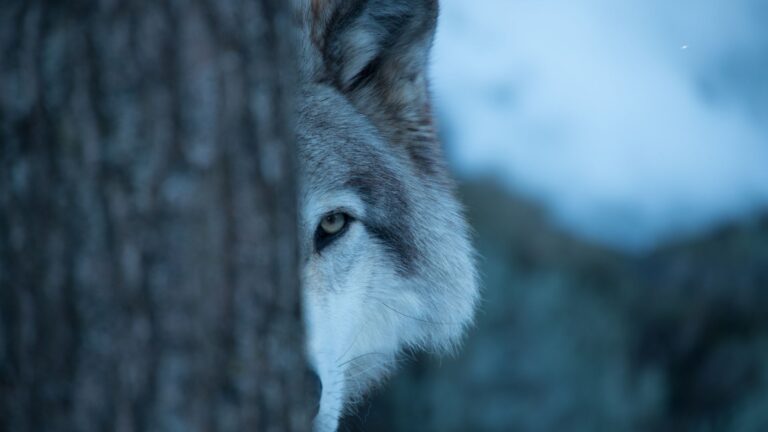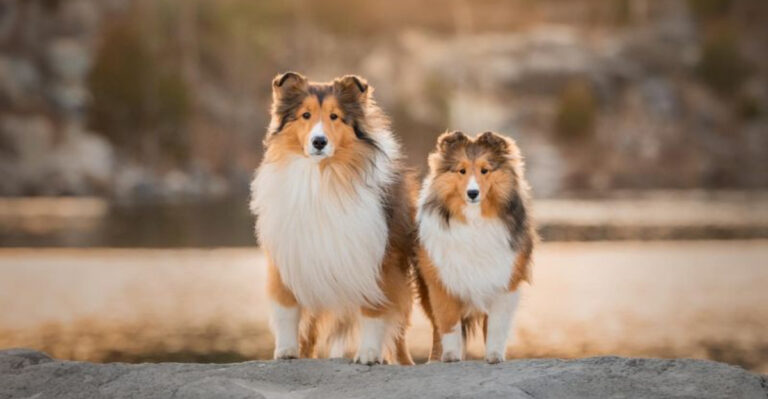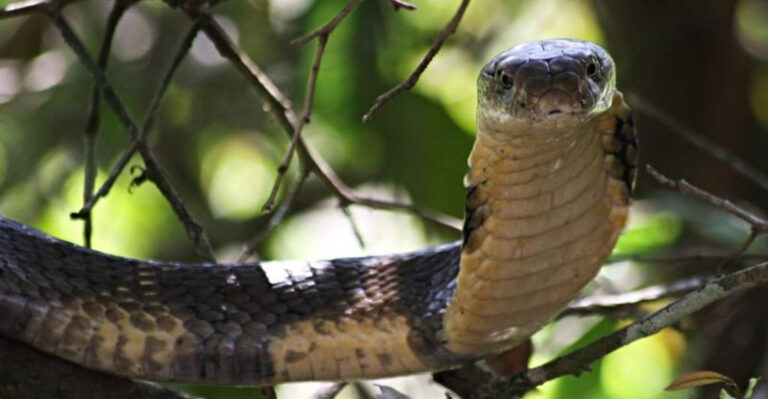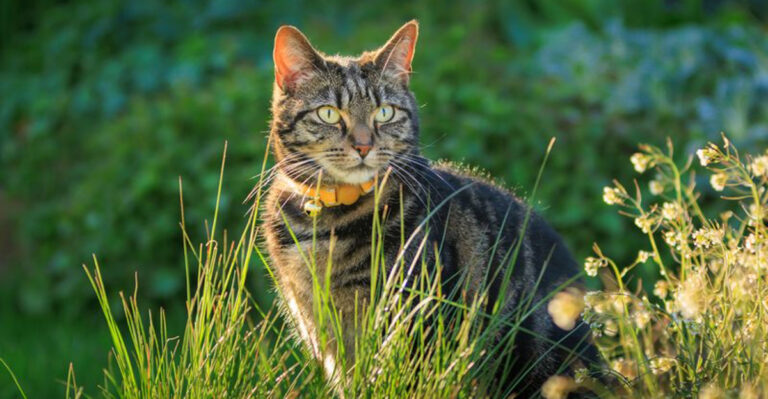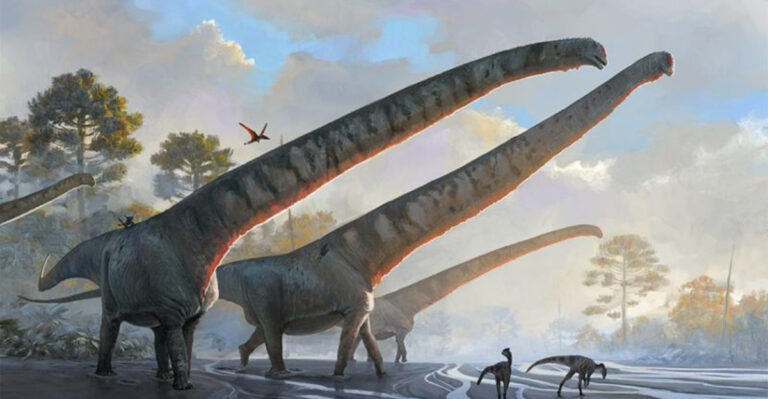Underwater Neighbors? 12 Facts About The Fish And Crabs Fossilized With Dinosaurs

Scientists have made remarkable discoveries that connect the dinosaur world with underwater creatures. Fossils of fish, crabs, and other marine animals have been found alongside dinosaur remains, painting a more complete picture of ancient ecosystems.
These findings help us understand how different animals lived together millions of years ago, showing that dinosaurs weren’t the only fascinating creatures of their time.
1. Crab Cousins Of The Cretaceous
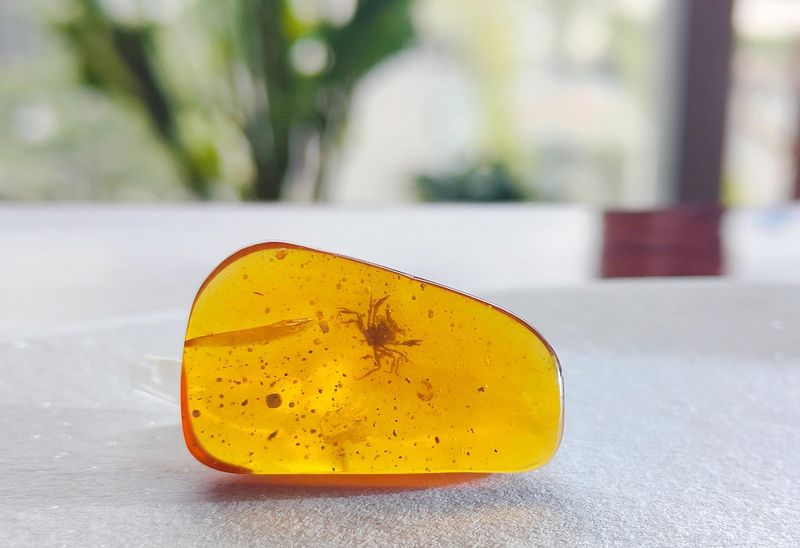
Ancient crabs scuttled alongside dinosaurs, as proven by spectacular fossils found in Myanmar amber. These tiny crustaceans, barely the size of a thumbnail, were preserved in tree resin that hardened 100 million years ago.
Scientists named one species Cretapsara athanata, meaning ‘immortal Cretaceous spirit of the clouds and waters.’ The amber captured these creatures in stunning detail, showing they looked remarkably similar to modern crabs despite evolving during the age of dinosaurs.
2. Shark Teeth Among Dinosaur Bones
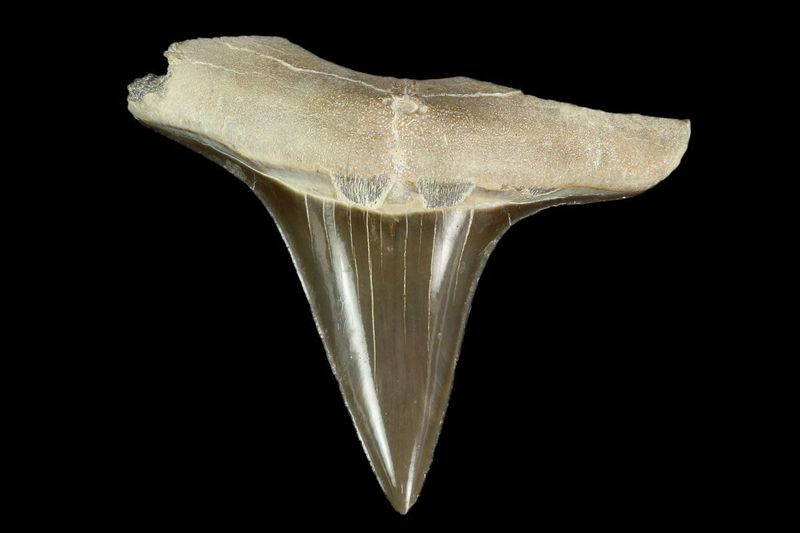
Paleontologists excavating a Tyrannosaurus rex skeleton in South Dakota made a surprising find: dozens of shark teeth scattered among the dinosaur bones. The ancient shark species Cretoxyrhina, nicknamed ‘the Ginsu shark,’ somehow became mixed with the land-dwelling dinosaur.
Scientists believe the dinosaur carcass washed out to sea after death. The sharks likely fed on the floating body, losing teeth in the process. This rare interaction between marine predators and terrestrial dinosaurs offers a glimpse into ancient food chains.
3. Morocco’s Marine Mosasaur Meals
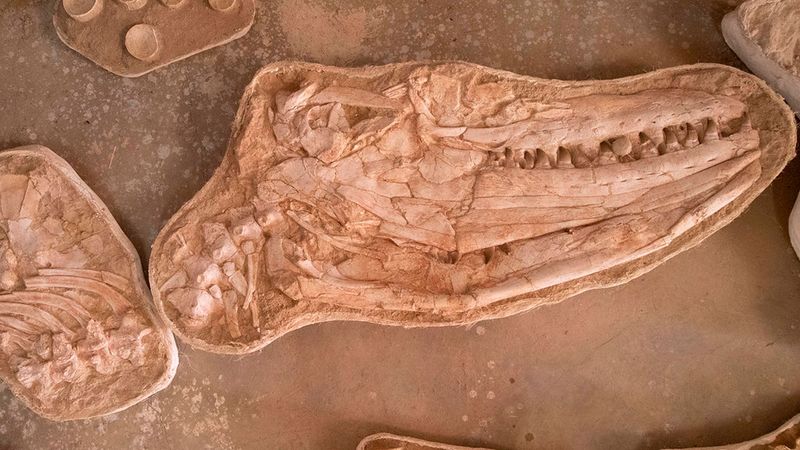
Phosphate mines in Morocco have revealed an incredible underwater food chain from the dinosaur age. Fossils show massive marine reptiles called mosasaurs with stomachs full of fish and crab remains.
These 45-foot sea monsters weren’t dinosaurs but ruled the oceans while T. rex dominated land. The perfectly preserved stomach contents give us a rare look at their diet. Some mosasaurs specialized in crushing shellfish with round teeth, while others had sharp teeth for slicing fish.
4. The Tanis River Treasure
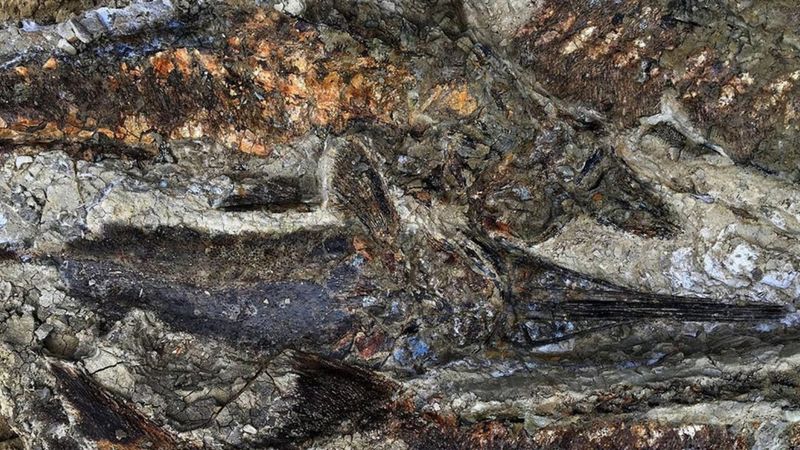
North Dakota’s Tanis site contains an unprecedented fossil bed formed minutes after the dinosaur-killing asteroid struck. The impact triggered a massive standing wave that surged inland, trapping fish, ammonites, and marine creatures alongside dinosaur fragments.
Fish fossils show gills clogged with impact spherules—tiny glass beads formed from Earth rock that melted during the asteroid strike. This extraordinary time capsule preserves the very moment of extinction, with marine creatures and dinosaur remains frozen together in their final moments.
5. China’s Feathered Dinosaur Lake

The Jehol Biota in northeastern China presents one of Earth’s most complete ancient ecosystems. This remarkable fossil treasure includes feathered dinosaurs alongside exquisitely preserved freshwater fish, crabs, and aquatic insects.
Volcanic eruptions rapidly buried these creatures in fine ash around 130 million years ago. The result is an unprecedented snapshot of life where dinosaurs, early birds, and aquatic creatures coexisted. Some fossils even show predator-prey relationships, with fish inside dinosaur stomachs and fish with insects in their own digestive tracts.
6. The Swimming Spinosaurus Mystery
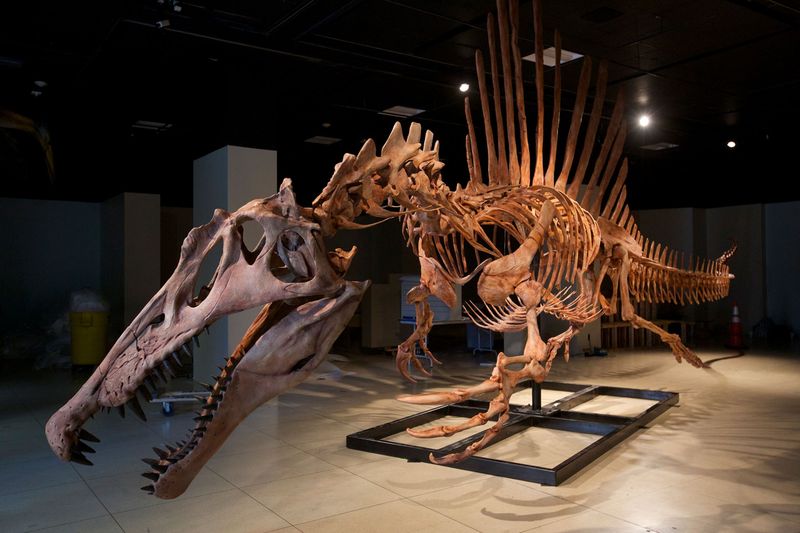
Spinosaurus, the largest predatory dinosaur ever discovered, has puzzled scientists for decades. Recent fossil discoveries in Morocco reveal it was actually semi-aquatic, with dense bones for underwater hunting and a paddle-like tail for swimming.
Fish scales and crab shell fragments found in the same deposits suggest these were its primary prey. Isotope analysis of Spinosaurus teeth confirms it spent significant time in water. This revolutionary finding shows some dinosaurs adapted to aquatic environments, hunting the fish and crustaceans that shared their world.
7. Australia’s Polar Marine Dinosaur Companions
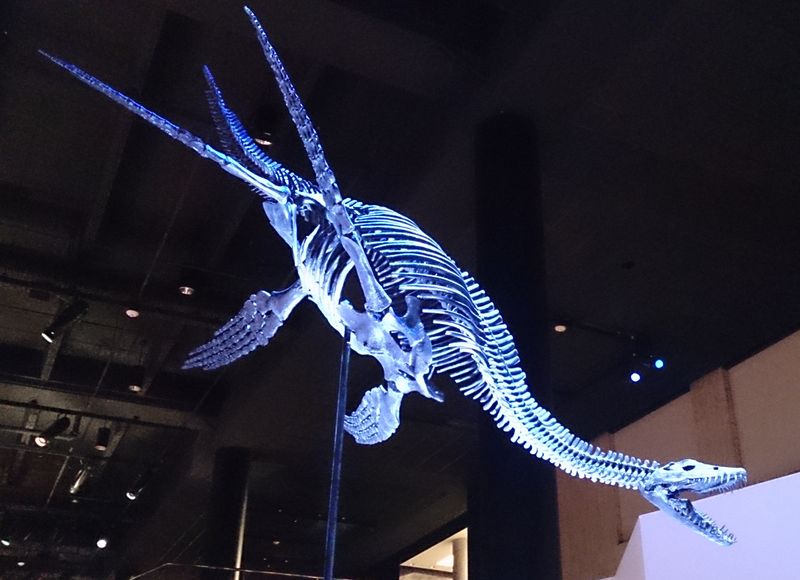
The frigid waters of ancient Australia, then positioned near the South Pole, hosted a unique ecosystem during the dinosaur age. Recent excavations have uncovered polar marine reptiles like plesiosaurs alongside fish, shellfish, and even frozen wood from dinosaur-era forests.
These creatures adapted to survive in cold, dark waters during long polar winters. The fossils include fish with specialized antifreeze proteins in their blood, similar to modern Antarctic fish. This remarkable collection shows how marine life thrived in extreme conditions while dinosaurs walked the nearby shores.
8. The Hell Creek Surprise
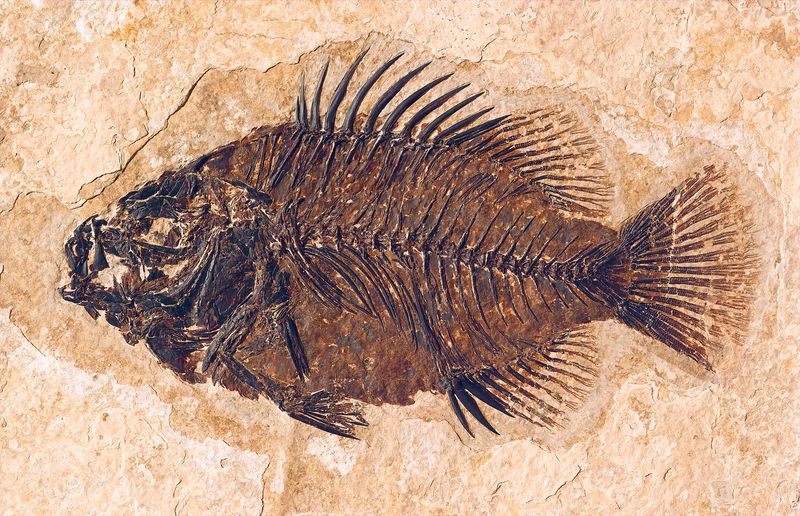
Montana’s famous Hell Creek Formation, known for T. rex fossils, yielded an astonishing discovery in 2019: a treasure trove of freshwater fish killed the day the dinosaur-killing asteroid hit Earth.
These fish died with debris in their gills from the impact wave that rippled through the planet’s waters. Their fossilized remains tell the story of the exact moment that changed life on Earth forever, preserving the last day of the dinosaur era in stunning detail.
9. Kansas Sea Monsters And Their Prey
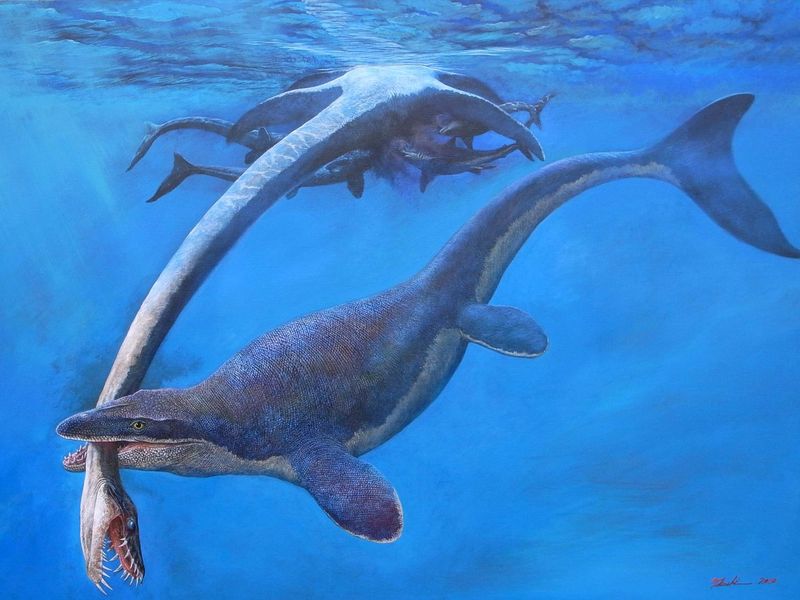
During the Late Cretaceous period, Kansas sat under a vast inland sea teeming with marine life. Spectacular fossils from this region include enormous marine reptiles like plesiosaurs and mosasaurs surrounded by the remains of their last meals.
Stomach contents reveal these predators feasted on fish, ammonites, and crustaceans. One famous specimen shows a mosasaur that died after attempting to eat another mosasaur! While T. rex roamed nearby shorelines, these marine hunters ruled the waters, creating complex food webs that paleontologists are still unraveling today.
10. Japanese Rice Paddy Revelations
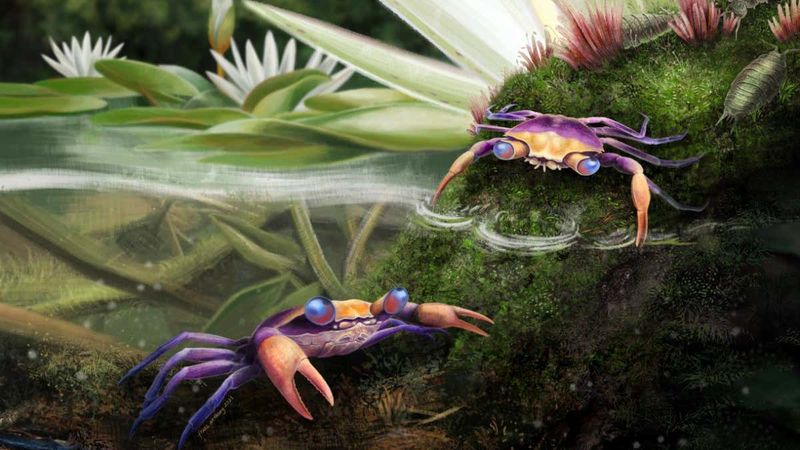
A farmer digging irrigation channels in a Japanese rice field made headlines when he uncovered dinosaur bones alongside perfectly preserved freshwater crab fossils. The site dates to 80 million years ago, during the Late Cretaceous period.
Scientists believe the area was once a coastal lagoon where dinosaurs came to drink. The crab species represents a new genus that appears to have evolved specifically for brackish water environments. This accidental discovery shows how dinosaurs and crustaceans shared habitats in ways we’re only beginning to understand.
11. Mystery Of The Gobi Desert Fish

Paleontologists working in Mongolia’s Gobi Desert stumbled upon something unexpected among dinosaur bones: perfectly preserved freshwater fish fossils. The discovery challenges what we knew about this now-dry region.
Analysis shows these fish lived in deep lakes that once covered the area where giant dinosaurs roamed. The fish skeletons reveal they were thriving during the Cretaceous period, swimming while T. rex and other dinosaurs dominated the land.
12. Antarctica’s Frozen Time Capsule
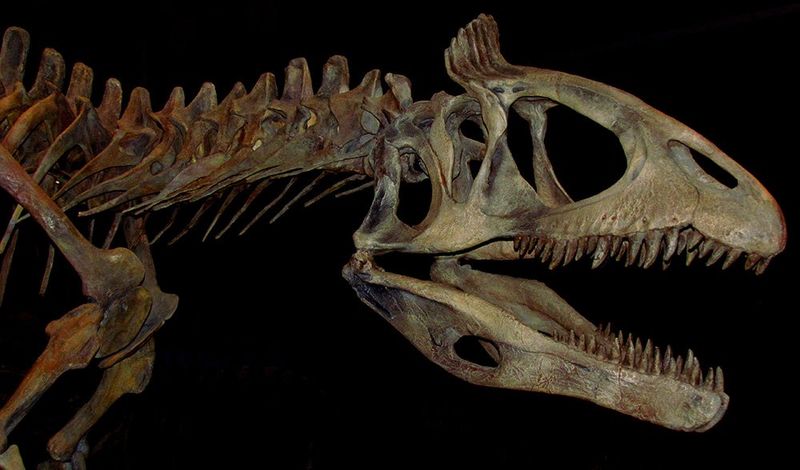
Beneath Antarctica’s ice lies evidence of a lush, warm world where dinosaurs roamed alongside rivers full of fish and crustaceans. Recent expeditions have recovered fossils of freshwater fish, crabs, and marine reptiles from the same rock layers as dinosaur remains.
The specimens date to 71 million years ago when Antarctica was still connected to Australia. Despite the challenging conditions, paleontologists continue to find new species in this frozen frontier. These discoveries reveal an ancient ecosystem where land and water creatures thrived together before continental drift and climate change transformed the continent.

